If you want to change the tone and feel of your guitar, changing the string gauge is one of the simplest and cheapest guitar changes you can make. But what string gauge is the best? In this article, we’ll go through how to measure string gauges in greater depth.
Choosing and replacing guitar strings is simple if you know which ones sound best for you and complement your playing style. The many different string gauge combinations and brands might cause a major headache if you don’t. You must select a set of strings with the suitable string gauge for your instrument, musical style, and playing style.

Contents
What is the gauge of a guitar string?
Ideally, we begin with the fundamentals to fully comprehend what we are discussing here. How do you interpret string gauge?
By “gauge,” we mean the thickness or dimension as determined by a standard measurement. In this instance, we are examining the string gauge of guitars, which reveals the diameter of the wire’s thickness.
This is crucial since the guitar’s performance and string gauge, are highly correlated.
There are six possible thicknesses for a 6-string guitar, for example. All gauge strings are unique because they produce distinct sounds when the guitar is played. Changing the thickness produces a different sound that may be more suitable for your needs.
There are a variety of thicknesses available. Some are designed for specific guitar types, while others are designed for specific tones. And if your guitar is capable of handling the thickness, it will function admirably. The majority of guitars come with standard-sized strings.
Low E: .046. A: .036. D: .026. G: .017. B: .013. High E: .010.
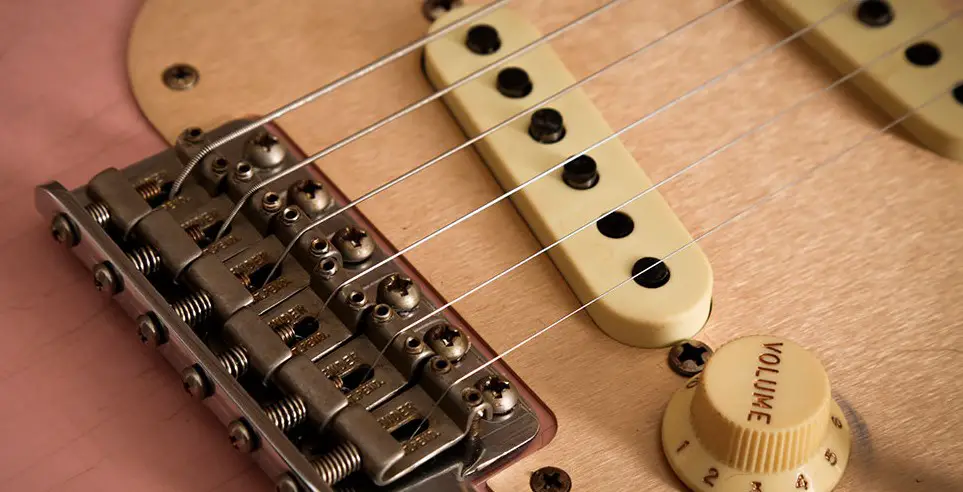
How does a guitar’s string gauge affect it?
You’ll observe a difference in playability when you experiment with different guitar string gauges. It is determined by the amount of thickness change.
However, it is prudent to anticipate that if you alter the gauge, the guitar will most likely require a set-up. Remember to recycle the old strings after you’re finished with them!
Some changes will deviate more from the specifications than others. As a result, you may just need to modify certain parts of the guitar to restore it to spec in some circumstances. Let’s have a look at several changes that will most certainly be required.
Playability
The distance between the gauge strings and the frets is defined as the action. The action of your guitar, as well as the bridge you have placed, may require adjusting. The guitar’s playability could deteriorate. This is especially true when using a different string gauge.
A change in string thickness will have an impact on guitar action. This is because a large jump can also affect the tension.
If you switch to heavy strings, the added tension may raise the action of the instrument. As a result, the strings will be further away from the fretboard. However, it is dependent on how thick they are.
In any case, a setup is necessary because the guitar may not be operable.
Tuning stability
Changing gauges will not necessarily impair tuning stability. You can tune and play the guitar perfectly. However, as previously mentioned, the action will be the more important issue because of the rise or drop in tension.
A few guitars could have tuning troubles due to their parts being in poor condition or of low quality.
For example, if a tuning head is in poor condition, the tension may be greater than it can withstand. A high-quality system with good parts, on the other hand, doesn’t tune instability issues. Each string note and name will be preserved.
The guitar should be easy to tune after it is set up. The guitars have, of course, been tuned in the right direction. As a result, the intonation can be off. This causes the instrument to sound out of tune at various notes.
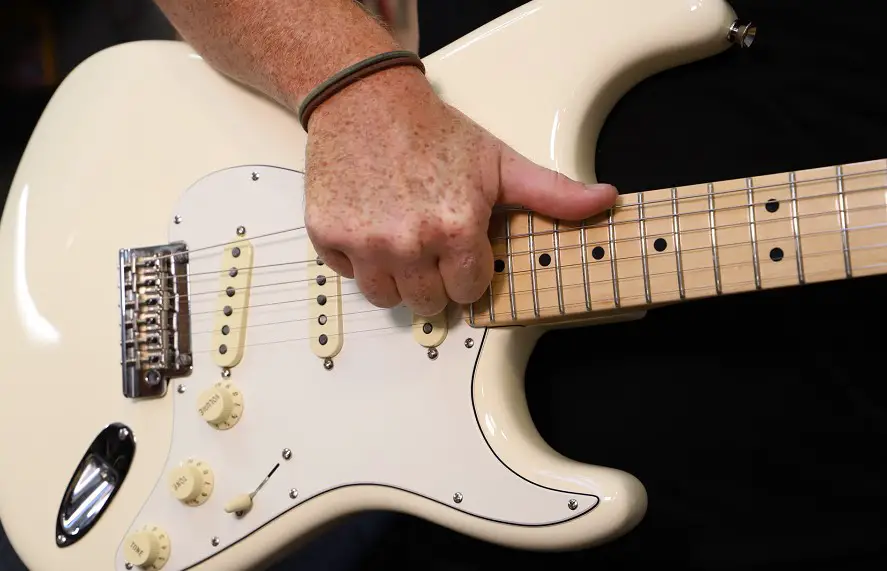
Intonation
Replacing the string gauge has an impact on your guitar in a variety of ways, depending on the modification. A significant difference is observed if you go from incredibly lighter strings to thicker strings. If the change is significant, it must be configured for the new type. There won’t be much of an impact on intonation.
It’s challenging to develop flawless intonation. If necessary, the intonation may be slightly adjusted when a guitar is set up. However, it depends on how severe it has gotten since the string’s gauge was changed.
String sticking
The nut is another consideration when replacing guitar string gauges. Your guitar’s nut may not be capable of holding the new thickness you’ve loaded. When players complain about tuning problems, it’s usually the nut that’s binding or sticking.
If the nut isn’t up to the task, it may break. To avoid problems, ensure the string grooves are the correct size.
Sound distinctions
A player typically tries out several gauges to see how they affect the tone they produce. A guitar’s thickness indeed affects how it plays and feels, but the sound is what matters most.
Sound is indeed subjective. However, once we’ve found the tone in our thoughts, we’re more than likely willing to forego how the instrument sounds. Heavy string guitarists are aware that they are more challenging to bend and have a higher tension. However, the sound is exactly where they desire it to be.
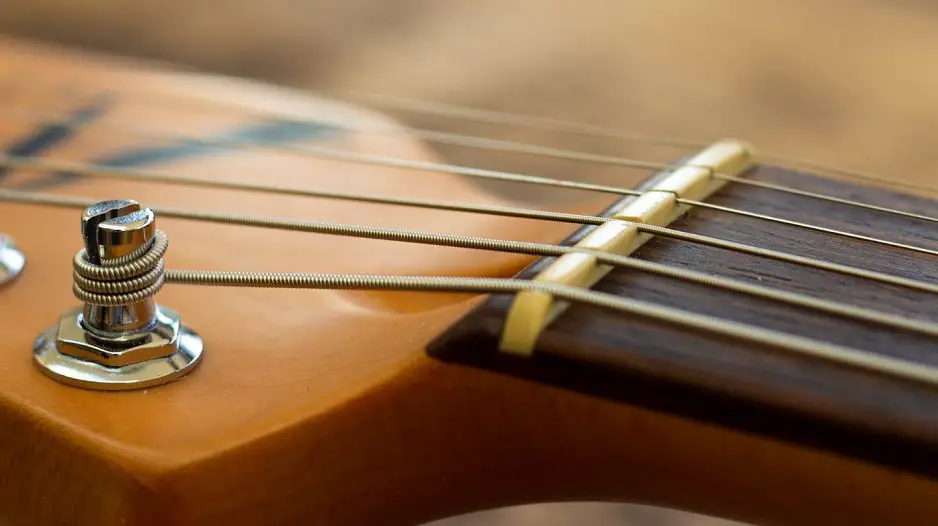
How do you know what gauge my guitar strings are?
You can’t really determine what gauge the strings are without using a micrometer or caliper to correctly measure the thickness of your guitar. Guitar strings are divided into two categories. There are those made for electric guitars and those made for acoustic guitars. Generally, electric guitars will have extremely thin strings with gauges of 10 or 11.
The best approach to determining the gauge of your guitar strings is to examine them. A digital caliper can measure strings to 1/1000 of an inch or three decimal places using the metric system.
A more expensive digital caliper will provide a more accurate reading. Most individuals are unfamiliar with using a digital caliper, but after a few tries, you’ll get the hang of it. As soon as possible, place the instrument on its back. The primary rule is to focus on the caliper while not over-squeezing the string.
To measure string gauge using the caliper set, first switch on the digital display. Then, once it’s zero, clamp a string between the jaws. When the caliper comes to a halt and cannot compress anymore, a measurement will be displayed on the display.
If they are made in the US, which is where the majority of guitar strings are made, then the diameter of the string should be measured.
What the number 9 indicates is precisely what an actual measurement of 0.0009 is, and what the number 10 implies is exactly what a true measurement of 0.010 is. You’ll have a much better notion of what each string is made of if you measure each one. Size 9 guitar strings denote a low E-string thickness of nine-thousandths of an inch.
Sets of strings are also referred to by their narrowest diameter for shorthand purposes. So if the high E string is 10 gauge, the entire set is referred to as “10s.”
The majority of guitarists use one of the primary string packages: heavy, light, medium, extra light, or super light.
Despite my concerns, I remain convinced that utilizing a digital caliper instead of a mechanical one is a better long-term decision.
The gauge of each string is usually noted on the pack of strings. The high E string or the thinnest string is sometimes used by guitar string manufacturers to describe the string gauge on guitar string packs.
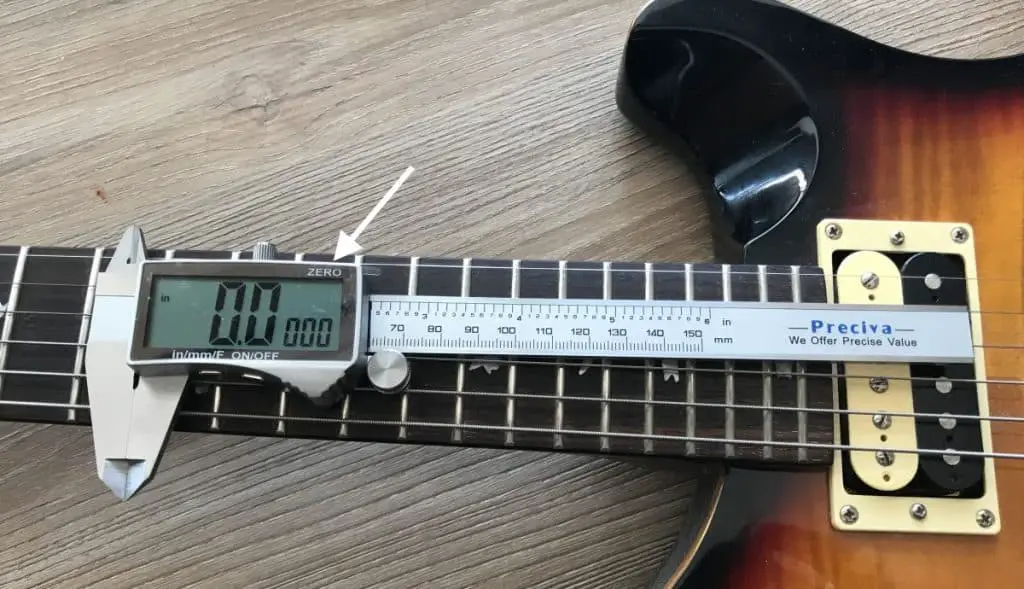
Standard electric guitar string gauge
When it comes to a normal electric guitar string gauge, there is no final answer because each musician has distinct tastes. A super light string gauge, for instance, is easy to bend and vibrate, whereas thick strings have a deeper tone and are less likely to break.
It is ultimately up to the guitar player to experiment with various gauges to determine what works best for them.
Thin strings make it simpler to achieve the big string bend that blues players crave. Studying guitar strings will lead you to the realization that they affect your playing style more than you expect.
Thicker strings are harder to bend and hold more strain, giving the impression that you are deliberately teaching them to strum. Thicker strings create greater bass and warmth, while lighter and brighter tones are produced by thinner strings.
As you use thicker strings more regularly, your endurance will increase, but you’ll need to put in a lot of effort to reach the necessary level before using them. Usually, Blues and Jazz guitarists may favor thinner strings.
Blues guitarists enjoy huge string bends, which are made possible by thinner strings. In comparison to heavier gauge strings, lighter gauge strings typically go out of tune more quickly.
Some acoustic guitarists prefer thicker strings, which provide more warmth, resonance, and volume. However, for a guitarist who enjoys playing leads, light gauge strings are the way to go.
Meanwhile, it’s advisable to avoid using heavy gauge strings when you’re just starting.
Medium strings strike a balance between light and heavy strings. They are less difficult to play than thick strings, have greater volume and sustain than light strings, and produce a warmer tone. They are more challenging to break compared to light strings.
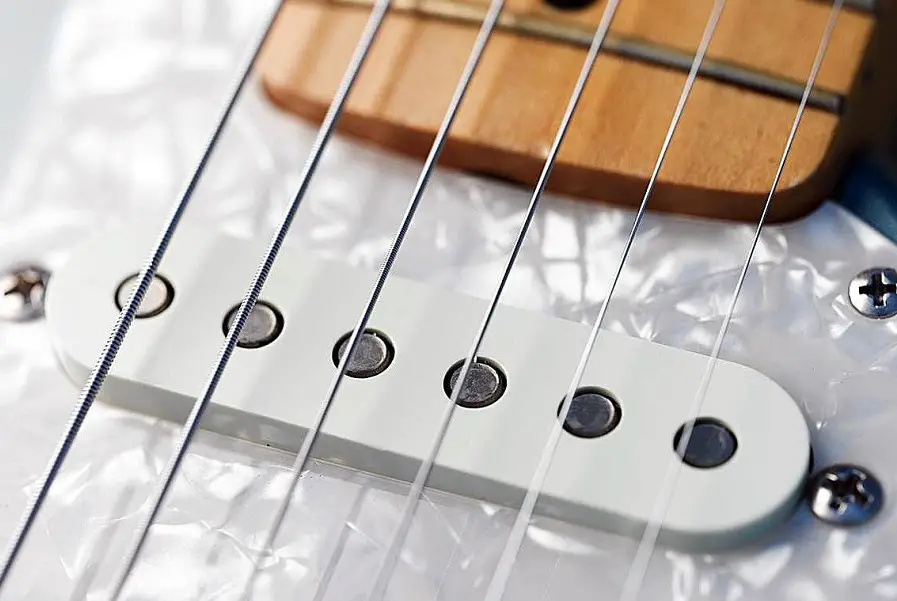
Are the gauges of acoustic and electric guitar strings the same?
Acoustic guitar strings are typically thicker than electric guitar strings because they produce a louder sound. So, when we say 8s extra light on electric guitar, we mean 10s extra light on acoustic guitar. A standard acoustic set is most likely 11 or 12-gauge.
Furthermore, the other string gauges will differ between acoustic and electric guitars. So, while the measuring and naming processes are the same, the sets for acoustic guitars will be optimized differently.
Are guitar string gauges in mm?
When you notice a number on a guitar string, say a “10” or “.010”, that number is just the diameter of the string in thousandths of an inch.
If you need to convert a guitar string gauge to mm while you’re out and about, simply multiply the imperial guitar string gauges by the constant 25.4.
Thus, a “.010” multiplied by 25.4 equals .254 mm, a “.013” multiplied by 25.4 equals .3302 mm, and so on.
When doing it this way, keep an eye on your decimals.
As a guitarist, you know the difference between a “10” and a “100,” but in decimal form, a “.010” and a “.100” are easily confused.
What do 12-53 guitar strings mean?
This pertains to the set’s top and bottom strings. So, 12-53 indicates that the thinnest string (treble) is a. 012 gauge and the thickest string (bass) is a. 053.
What gauge are standard guitar strings?
9-11-16-24-32-42-54 are the most commonly used electric guitar gauge strings. The first number represents the gauge of the thinnest string, whereas the final number is the gauge of the thickest string. The numbers in between represent the other gauge strings, which are listed in order of thickness, from the thinnest string to the thickest.
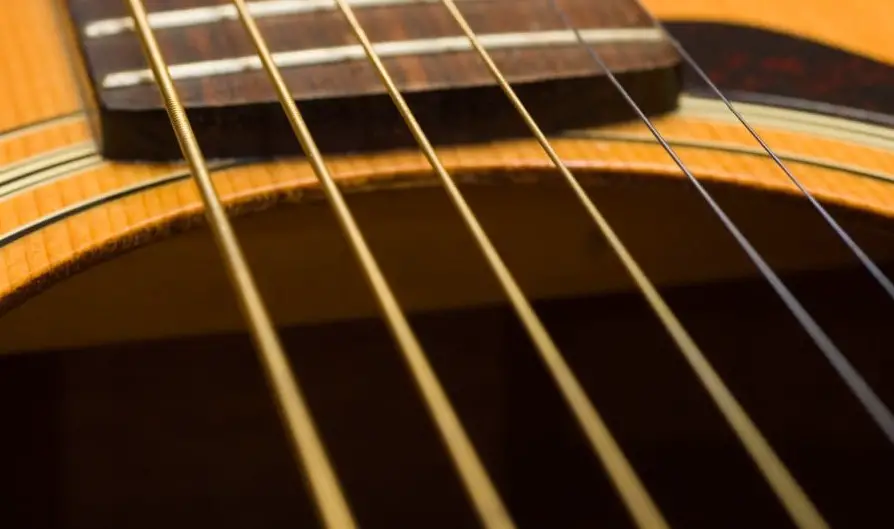
Conclusion
We’ve spent some time discussing the problems with guitar strings, how to gauge a string, and how to distinguish between different gauges. Hopefully, after reading this, you have a better understanding of the significance of the strings on your guitar and how to measure your present strings.
